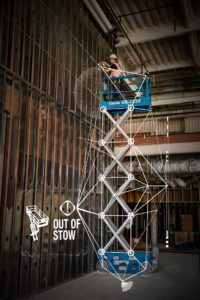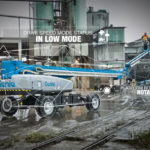Get the ‘Connect’ answer with the latest telematics system from Genie
Ours has been characterised as the age of big data but, the bigger it gets, the harder it is to consume. In our increasingly connected world technology providers are racing to find ever more user-friendly interfaces, where the most pertinent information is prioritised and the purveyors of construction plant are no different. For Genie it was a journey that began in 2015 with its telematics-ready connector system and, like the technology itself, its functionality, reach and scope has increased exponentially in a very short space of time.
“Most of our customers have mixed fleets,” explains the company’s Christine Zesnick, “and the lack of a standard API was making it very difficult to access relevant information in a user friendly format on all of their machines. What that meant was that an end user needed to take the data from those units and transfer it via the API to a single portal. Over time, as APIs became more standard, it became apparent that we would need our own solution, and the result is our full service telematics platform, Lift Connect.”

The system will now be available as standard via a 3-year subscription on the majority of Genie machines, including GS scissor lifts, Z- and S-boom lifts and GTH telehandlers. Telematics hardware and a 3-year subscription for Genie GR and QS vertical masts, TZ trailer-mounted booms – as well as for Terex and Genie branded light towers – can be purchased as an option. Not only that, but any machines from 2015 and beyond presently equipped with a telematics ready connector can be retrofitted, either by a Genie dealer or the customer can complete the installation themselves.
At the time of purchasing a machine, if customers would like to extend that subscription beyond the standard three years, they can opt for up to an additional six. Moreover, if the unit’s initial 3-year term is coming up to its expiry date, a subscription to the Genie Lift Connect telematics contract can also be extended through the manufacturer’s aftermarket parts department.
 So just what kind of functionality can fleet managers enjoy for their investment? “Highly qualified service technicians are increasingly difficult to find and represent a valuable resource,” continues Christine. “As a result implementing a regime where issues can be diagnosed remotely, and prescribing when a machine needs attending to rather than being reactive has clear cost benefits in terms of managing your assets. Remote fault-finding, including the requisitioning of the parts required, saves on journey times for mobile engineers and enhances maintenance plans. Essentially, the driving principle behind it is the sharing of information, and allowing our customers to improve their processes as a result.”
So just what kind of functionality can fleet managers enjoy for their investment? “Highly qualified service technicians are increasingly difficult to find and represent a valuable resource,” continues Christine. “As a result implementing a regime where issues can be diagnosed remotely, and prescribing when a machine needs attending to rather than being reactive has clear cost benefits in terms of managing your assets. Remote fault-finding, including the requisitioning of the parts required, saves on journey times for mobile engineers and enhances maintenance plans. Essentially, the driving principle behind it is the sharing of information, and allowing our customers to improve their processes as a result.”
A telematics solution like LiftConnect signals the evolution from a descriptive model, where it might communicate what machinery is doing at any given moment, to a more prescriptive one. It is essentially becoming a powerful tool in the hands of fleet managers which can have a direct influence on wider business decisions, such as the buying and selling of machinery based on a detailed data-set of how it is actually being used in the field.
In that context, according to its makers, LiftConnect provides a level of data to end-users that is not currently available in the aerial work platform market, and that includes not only utilisation and preventative maintenance but a whole range of other issues. In the development of Lift Connect a considerable focus has been placed on transparency and ease of use, for instance, no matter what the size of fleet. Machines can be viewed on a map whilst all of the most important information is prioritised in near real time reporting, including fuel levels, battery life, hours worked and fault codes. Assets can be colour coded according to specific alerts, and detailed reports then generated on utilisation of equipment across a range of variables.
Having been launched at Bauma Genie Lift Connect will be joined in the months ahead by further fleet management solutions. The aerial work platform specialist’s Access Control keypad, for example, will demand an ID card or code to access the machine, preventing unauthorised usage.









